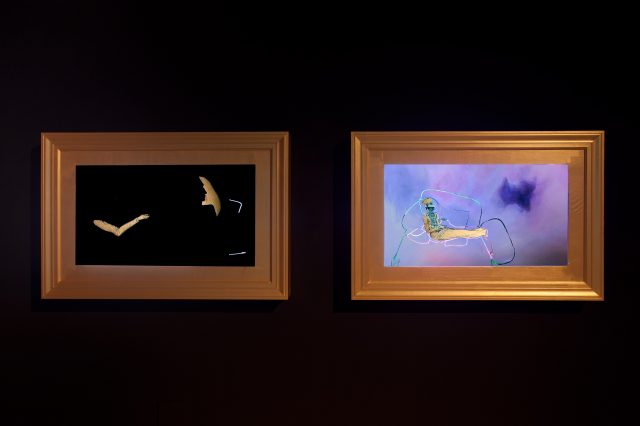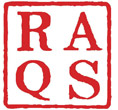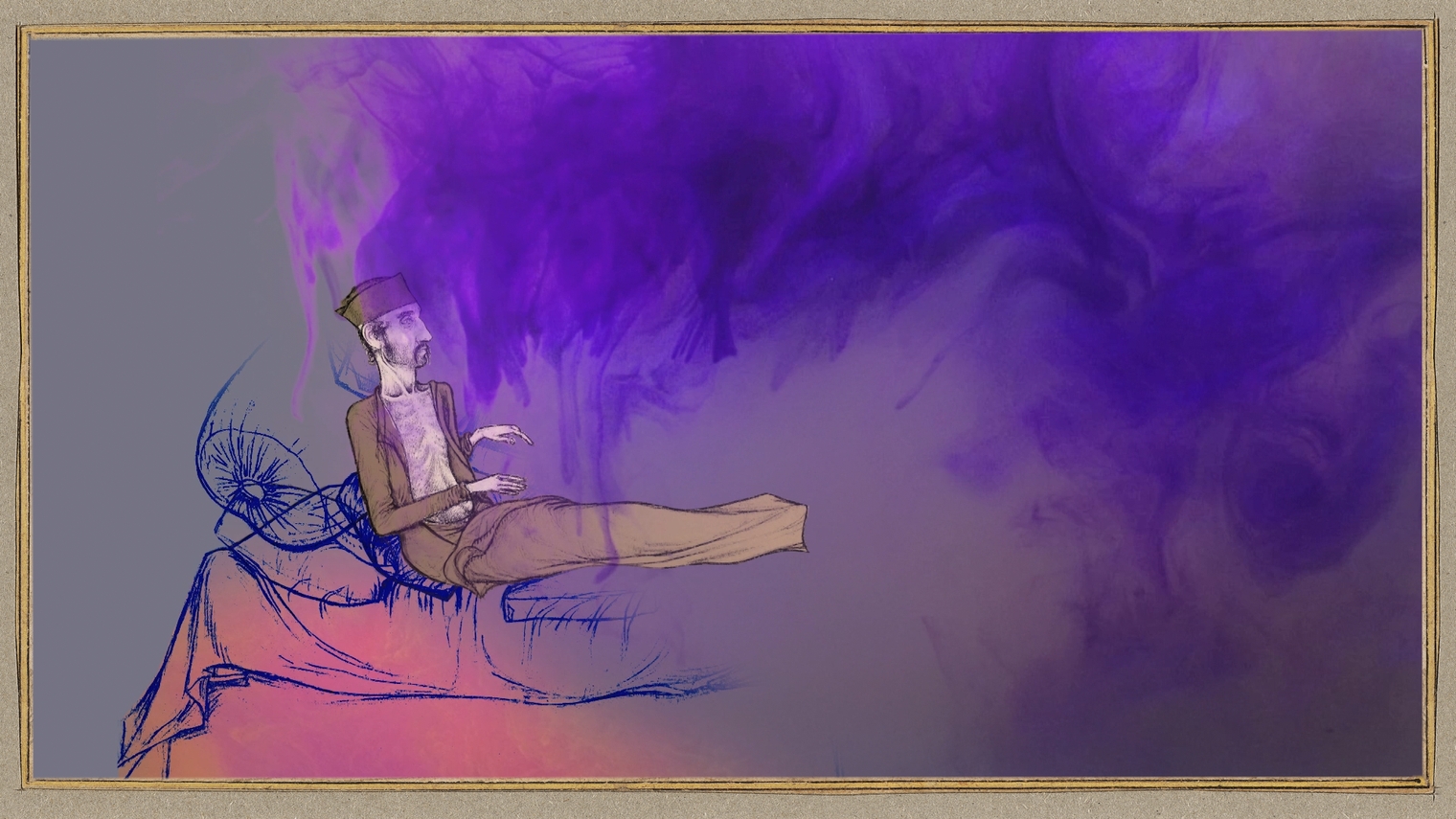Dyeing Inayat Khan (2016)
Shown at: New Sensorium, ZKM, Karlsruhe (2016) | Nature Morte, Bikaner House, Delhi (2021)
2- channel video installation, color and sound
Animation and editing: Ikroop Sandhu and Rajan Singh
With Dyeing Inayat Khan, Raqs extends their practice of intervening with video in archival and historical traces. The video diptych is an animation of a facsimile of a drawing for a Mughal miniature – translating “animation” into a mode of traversing the threshold between life and death, between being animate and being inanimate. By breathing life into a seventeenth century portrait of a dying man from the Mughal Court, Raqs offer a meditation on what life (luminous, desiring) means in the context of the passage of time and the inevitability of mortality.

The original drawing is an early seventeenth century drawing in the Mughal miniature style attributed to Balchand, an artist from the atelier of the court of the Mughal emperor Jahangir. The drawing is a study for a portrait of a dying nobleman named Inayat Khan. It shows the close court official on his deathbed, ravaged by opium and alcohol addiction.
The original drawing is an early seventeenth century drawing in the Mughal miniature style attributed to Balchand, an artist from the atelier of the court of the Mughal emperor Jahangir. The drawing is a study for a portrait of a dying nobleman named Inayat Khan. It shows the close court official on his deathbed, ravaged by opium and alcohol addiction. For Mughal emperor Jahangir, the spectacle of Inayat Khan’s emaciated body was both a curiosity and a warning. In his memoirs, he described the dying man in the drawing as being in a state of passing over into the realm of non-existence. Today the drawing is found in the collection of the Museum of Fine Art, Boston.


